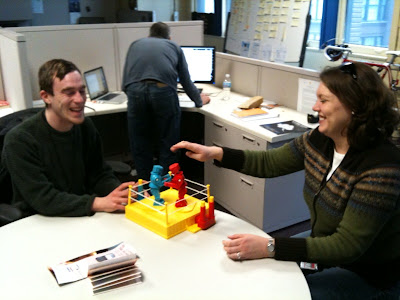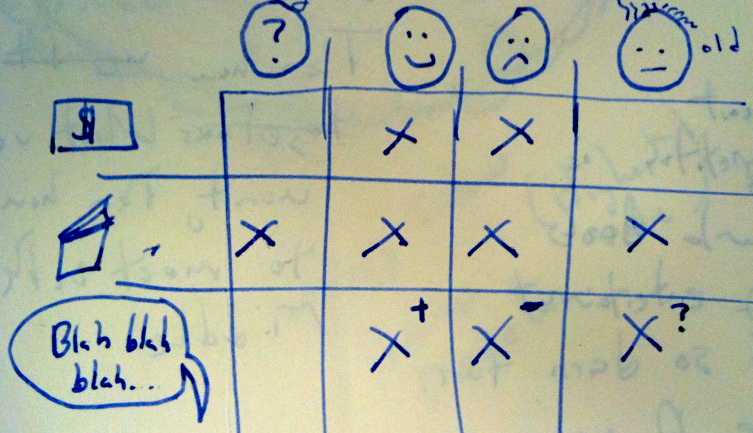Here are the details for the Manager – User Experience Research position.
User Experience Research Lab Manager
Business eCommerce – ALL
State/City IL Chicago – Downtown
Job Description Sears Holdings is seeking an experienced Research Lab Manager to join our User Experience Team.
The Manager is responsible for managing the research team. The ideal candidate should be able to creatively envision, evaluate, and contribute to the design of successful user experiences.
The Research Lab Manager will receive and review all requests to use the Usability Lab. The Lab Manager will decide if the request fits within the guidelines of our policy and can be accommodated in the schedule. If a conflict arises, the Lab Manager will involve the User Experience Managers to resolve the issue. The Lab Manager will also be responsible for ensuring that appropriate training and use of the Lab occurs.
Additionally, the Lab Manager will determine what type of support the requestor will need, such as a usability test facilitator, notetaker(s) and recruitment of users for testing. The Lab Manager is responsible for the Testing Room and the Observation Room as well as the hardware and software support them.
As an integral part of the User Experience team you will work closely with multidisciplinary teams, including user experience architects, product managers, visual designers, and front-end developers to conduct the research and support development of features to be studied through surveys, card sorts, task-based findability and goal-oriented studies, as well as rich interactive prototype testing.
Your responsibilities will include making informed recommendations on design strategies, leveraging best practices, accurately estimating and tracking your time across multiple simultaneous projects, as well as working with the User Experience Management Team to develop and document methodologies, standards and best practices for the lab.
Currently, we are interested in candidates with 5+ years of demonstrable experience and who have had a background involving large scale web initiatives or software. The ideal candidate will have exceptional communication and analytical skills, be well versed in user-centered design research practices, and familiar with the day-to-day operations of running the lab.
**Please note – this is not a design position. However, the Lab Manager is expected to participate and collaborate with the User Experience Architecture team on recommended design solutions.
Country United States
Responsibilities/Skills/Experience Requirements Qualifications:
• Have an attention to detail and a passion for improving the user experience.
• Experience conducting user research and competitive analysis using industry standard practices.
• The User Experience Research Manager will also be responsible for managing our in-house usability testing lab, including lab equipment, software, policies and procedures.
• Be comfortable working in a fast-paced environment. Familiarity with iterative design-agile environment a plus.
• Work closely with user experience managers, product managers, business analysts, user experience architects, visual designers, and front-end developers to understand business requirements, user goals and objectives, in order to define tactical solutions that improve conversion rate and enhance the customer experience.
• Continue to improve our research process for testing product changes and gathering user feedback throughout the product development lifecycle.
• Advise and guide project teams in planning user research activities that inform and support product development; help teams determine best research methodology to use in order to meet business objectives.
Key skills:
• Experience managing test recruiting, partnering with vendors to recruit external test candidates and recruiting external/internal users when necessary.
• Help product teams plan and execute external user-research and usability tests with research vendors as needed.
• Supporting and conducting usability studies both in the lab and remote sessions– preparing test plans, recruiting participants, facilitating test sessions, collecting and analyzing data, and preparing reports.
• Developing, prioritizing, and documenting recommendations.
• Tracking usability issues from discovery through resolution.
• Presenting usability results to various levels of the organization.
• Experience with Morae.
• Experience with Tobii a plus.
• Experience with survey construction and online surveys a plus.
• Experience with Omniture Web Analytics a plus.
Requirements:
• Direct experience managing an in-house testing lab and basic A/V knowledge.
• 5+ years experience designing and conducting user-centered design research and usability testing for e-commerce and/or software.
• Ability to work collaboratively on multi-disciplinary teams.
• Excellent communication skills (verbal and written).
• Manages time well, and is very organized.
• Ability to manage overlapping assignments.
• Works well with others.
• Adept at handling change and shifting priorities
Requisition ID 74634BR
Preferred Minimum Education Bachelors Level Degree
Years Experience 5 – 10 Years Experience
Travel Requirements On Occasion (Less than 5%)




